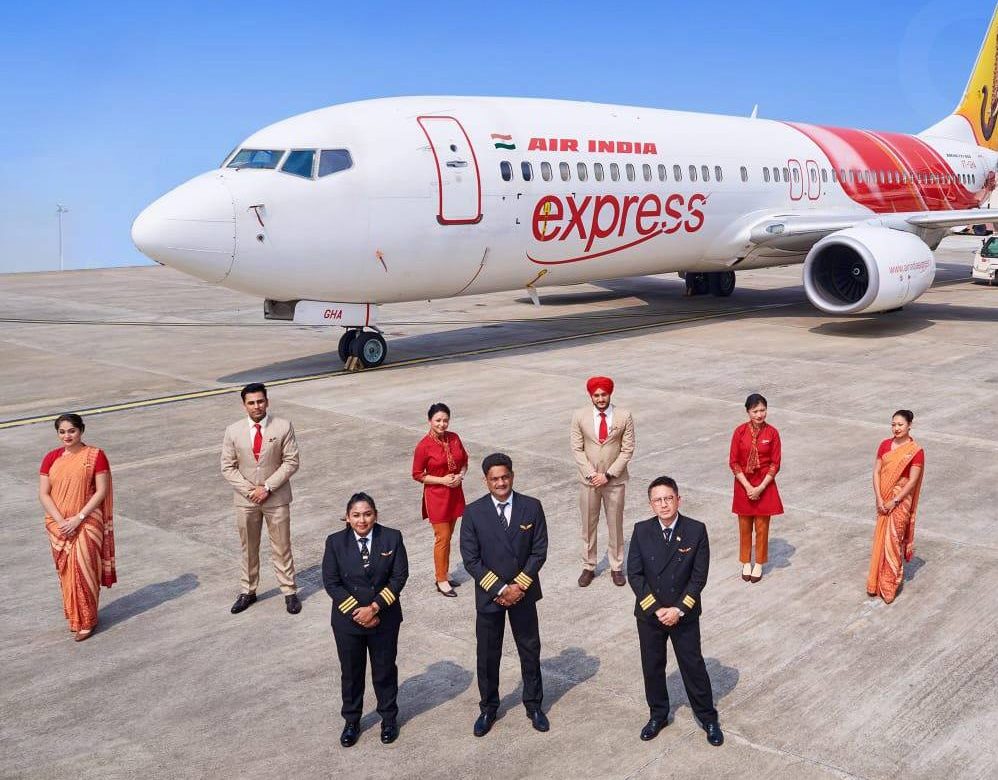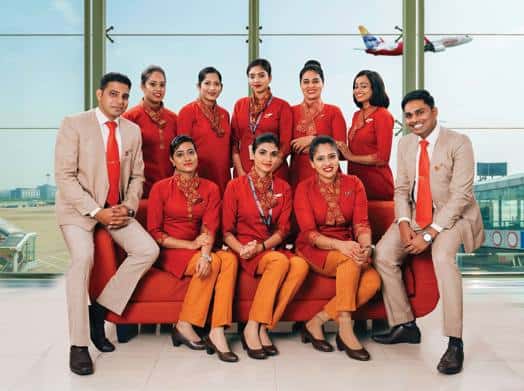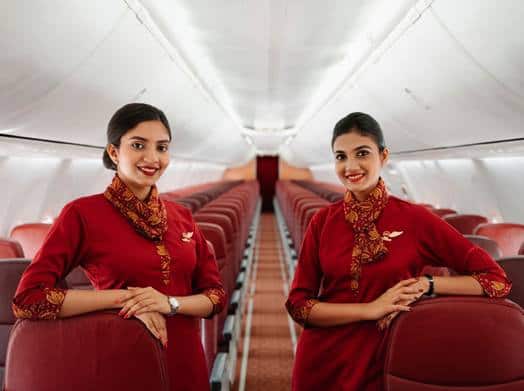Homegrown and reliable, Air India Express has built its market share on two things Indians love – convenient travel and pocket-friendly fares.
The Kochi-headquartered, wholly-owned subsidiary of Air India, this airline connects 14 international destinations to 19 Indian cities, from metros to small towns. The low-cost carrier took flight in 2005, scripting aviation history as it made affordable and convenient air connectivity possible for the flourishing Indian expatriate community in the Gulf region. Delivering quality, comfort, and convenience; the airline ensures a unique travel experience for its guests.

The first of many
In the 17 years, since its inception, Air India Express has notched up many firsts to its credit. India’s first international budget airline, Air India Express began as a solution to the growing demand for easily affordable travel to the Gulf from smaller Indian cities.
The meteoric rise of the Indian community in the Gulf, especially from Kerala saw a growing demand for continuous travel between the borders. Today the airline’s fleet of 24 Boeing 737-800 aircraft operates medium and short-haul routes, operating to 34 destinations in the Gulf and South East Asia.
During the pandemic, it became the first airline to use robotic technology for UV sanitisation of aircraft. True to its spirit, Air India Express operated the country’s first Vande Bharat Mission flight and was the first Indian airline to operate an international flight with a fully vaccinated crew.
India first and always
Air India Express is the first airline to join Tier 2 and Tier 3 Indian cities with international air connectivity. On many regional international routes, this airline is the only one to operate direct flights. Keeping India first in its brand ethos, the airline’s cabin crew is predominantly hired from smaller cities and North East India, giving many youngsters their first ticket to economic independence and global opportunities.

Post the global pandemic, the airline ramped up its operations and has succeeded in adding to its expanding team from cities and towns like Mangalore, Kozhikode, Trichy, Kochi, Imphal, and Guwahati, apart from metros.
Cementing its name in the economic growth of India, the airline operates one of the most successful low-cost-carrier business models in the country, with one of the lowest seat capacity costs globally. Prior to the pandemic, the airline had recorded net profits for five consecutive years and is revving up its operations to make the post of the post-pandemic growth in international travel to and from India.
Air-bound for India’s economic growth
The India-Gulf region, one of the largest migration corridors in the world fosters the movement of human capital and is among the busiest air routes in the world. It serves as a major source of income for India through remittances. Air India Express through its affordable and enhanced air connectivity has given flight to the Gulf dreams of millions of Indians who in the past decade have been instrumental in increasing the remittance income for India.

When the pandemic disrupted the global supply chain and slowed down India’s exports; Air India Express rose to the challenge and established a cargo organisation, operated cargo charters, and introduced Passenger to Cargo(P2C) flights to airlift India’s agricultural produce to overseas destinations.
This novel quick turnaround initiative created an overseas market for Indian farmers in the Middle East, South and South East Asia, empowered 35,000 tons of farm produce exports, and generated steady income for Indian farmers and exporters, until the global supply chain resumed normalcy in January 2022.
Cargo-in-cabin operations also brought in a steady income stream for the airline and helped the airline to optimise capacity utilisation with P2C flights and it also carried cargo in the belly holds of its normal passenger flights, thereby maximizing revenue opportunities all the way.
Promoting Indian culture in global skies
Keeping its India-centric approach; Air India Express promotes Indian art in its everyday operations. The airline’s Boeing 737-800 fleet features stunning tail art; each aircraft’s embellished tail art draws inspiration from the country’s inimitable cultural diversity.
Given its Kochi roots, the airline is all set to flaunt contemporary artwork from Kochi Muziris Biennale (scheduled in December 2022), India’s first biennial of international contemporary art. This interesting collaboration is set to exemplify a new marketing innovation to showcase an Indian art extravaganza in the skies, literally.
Empowering equality, in-flight and on land
Air India Express showcases the spirit of new India. Progressive and assertive, the airline maintains a firm stand on promoting diversity, inclusion, and gender equality. Forty percent of its team comprises of women leaders. Interestingly, the proportion of women pilots in Air India Express is higher than the national average.
The airline has 45 women pilots (16 Captains and 29 First Officers) and women leaders across key departments such as Commercial, Finance, Company Secretariat, Flight Dispatch, and Training. Feted and recognised as among the ‘Best Places to Work”, ‘Iconic Brands in Aviation’ and for its CSR (Corporate Social Responsibility) initiatives in reputed forums and industry meets; Air India Express has made a workplace that celebrates excellence and talent from across India.
As the post-pandemic world opens up, Air India Express is looking ahead to be the wings beneath India’s growing global impact and influence. The airline, already a market leader in the low-cost carrier (LCC) segment in the Gulf route is ramping up its business pillars of reliability, efficiency, safety, and service excellence. After all, connecting home-bound hearts and dream-laden eyes is never just business. It’s an act of priceless service to the nation.
Read More: Aviation



